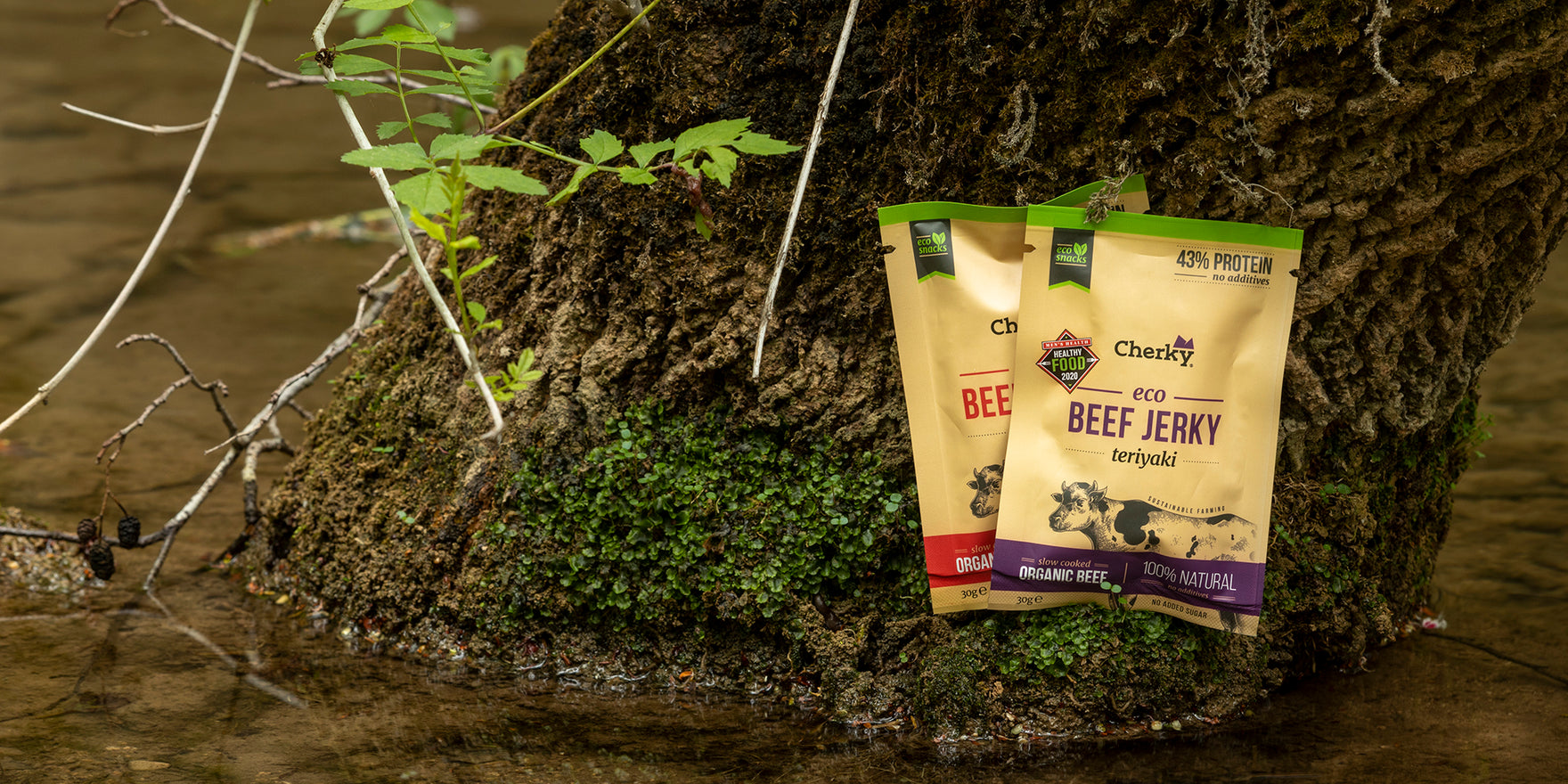
About Beef Jerky and Biltong
As our journey as pioneers in the European Beef Jerky makers landscape continues, we keep growing and learning more about our products every day.
Making packaged food products is not an easy task and, as in every business, issues can arise.
We are producing hundreds of thousands of jerky products every year and from time to time we get a message or a call from a customer that is not fully satisfied with the product.
Most of those complaints or concerns are due to some kind of white stuff in their beef jerky or biltong.
Our goal with this post is to address those potential situations and show what we have learnt about it.
What’s the white stuff on my jerky?
Most people forget that good quality beef jerky is a natural minimally processed product. Some brands use nasty ingredients like sodium nitrate or up to 30% sugar, which acts as a preservative as well.
We choose to make the best product we could, and that means to make the cleanest product we can. With that said, Beef doesn’t come in perfectly square meat cubes. Variations in color and texture can happen.
Some variations are perfectly normal and safe to consume, while others are not. What you think is mold, might be something else. We’re here to help!
Tyrosine crystals.
“Pure protein may appear on the surface of the product in a form of white coating”. This claim appears in every Cherky meat snack bag.
This ¨white coating¨ is something very common in cured meat products or in matured cheeses. It has a technical name; tyrosine crystals.
Tyrosine is one of the 20 amino acids present in animal protein. During the curing process, our meat snacks lose most of their moisture (and weight), through dehydration or air-drying.
With these processes, protein degradation takes place, resulting in the formation of free amino acids that end up crystallizing, hence the appearance of these white spots on the Biltong or Beef Jerky.
Beef Jerky and biltong are more prone to this crystallization than other meat products due to its higher protein and very low moisture.
If you find some white spots in your snacks like this, you should not be worried, the product is absolutely fine:

Fat on beef Jerky:
Fat will sometimes appear as white solids on the surface of beef jerky.
Beef jerky is made with lean meat, but that doesn’t mean it’s completely free from fat. Some batches of Beef will have slightly more marbling and fat content. The fat is not visible during the cooking and dehydration process, but once the jerky cools, small fat solids will remain.
The residual fat will sometimes leave a shiny, wet appearance with small spots of white grease. The fat particles will often collect around areas of marbling. It’s perfectly safe to eat.

Mold:
Nevertheless sometimes, the worst-case scenario happens and the jerky or the biltong are not good to eat.
The bag can get damaged during storage or transportation or we made a mistake by not sealing properly the bag in the packaging phase. A defective bag allows air to get inside the packaging and this causes the product to spoil.
Molds are microscopic fungi that exist on plant and animal matter. Mold spores contribute to the green and white spots you see on spoiled beef jerky. Mold is gross, no doubt about it. The good news is that most mold is clearly visible to the naked eye.
If this happens, a gray/green velvety mold covers. This is very different from protein crystallization and in this case, the bag has to be thrown away, and we will happily send you a new bag.
You can see the difference in this picture:

The tell-tale signs of mold are fuzzy, dusty, or furry foreign substances that are green, white, or grey in color. Mold typically has a spider-web pattern. If it looks like cobwebs, it’s mold.
Smell is another way to identify mold. If the jerky has an “off smell” then this can be a sign that mold is present.
Is it safe to eat jerky with white mold?
The short answer is no. There is a wide diversity of mold types. While some types of mold are safe to eat and even beneficial to a product (think blue-veined cheese, brie, and salami), others can cause adverse health problems.
As a general rule of thumb, most mold types will not harm you, but there’s no guarantee, and the risk is not worth it.
What if I eat jerky with mold?
If you accidentally consume beef jerky with mold and are showing negative symptoms, we recommend consulting a medical expert.
For most healthy individuals, consuming a small amount of moldy beef jerky can result in no symptoms up to minor symptoms such as nausea, upset stomach, and mild discomfort.
As mentioned before, the good news is that you can see it very easily.
Please, if you have any issue or doubt with one of our products, please contact us and we will provide a solution.
Sincerely yours, Cherky team





